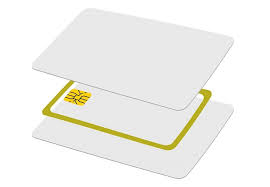


Description:
The 13.56MHz RFID (Radio Frequency Identification) card is a contactless smart card that operates at a frequency of 13.56 megahertz. It is commonly used for identification, access control, tracking, and other applications where secure and convenient data transmission is required.
Description of the 13.56MHz RFID Card:
- Operating Frequency: The RFID card operates at a frequency of 13.56MHz, which is within the high-frequency range for RFID communication. This frequency range is widely adopted and supported by many RFID systems and readers.
- Contactless Technology: The RFID card uses contactless technology, allowing it to communicate with compatible RFID readers or systems without the need for physical contact. This makes it convenient for applications such as access control, where cards can be quickly scanned without inserting them into a reader.
- Integrated Circuit (IC) Chip: The RFID card contains an embedded IC chip that stores and processes data. The specific IC chip used may vary depending on the card manufacturer and model. Common IC chips used in 13.56MHz RFID cards include MIFARE Classic, MIFARE Plus, MIFARE Ultralight, and NTAG series.
- Data Storage Capacity: The data storage capacity of the RFID card depends on the IC chip used. Different IC chips offer varying storage capacities, typically ranging from a few kilobytes to several kilobytes or more. The storage capacity allows the card to store information such as unique identifiers, access control credentials, or additional data relevant to the specific application.
- Communication Protocol: The RFID card typically uses a communication protocol based on the ISO/IEC 14443 standard, which defines the communication and data transfer between the card and the reader. This standard ensures compatibility and interoperability between different RFID systems.
- Form Factor: The RFID card is often designed in a standard card format, similar to a credit card. It typically has dimensions of 85.6mm × 54mm, which is the same size as a standard ID card.
Specifications:
- Operating Frequency: The RFID card operates at 13.56MHz, allowing it to work with compatible RFID readers and systems operating within the same frequency range.
- Read Range: The read range of the RFID card depends on multiple factors, including the power output of the RFID reader and the antenna design of the card. Generally, the read range can range from a few centimeters to several meters.
- Security Features: The RFID card may incorporate security features such as encryption, authentication, and data integrity checks to ensure secure and reliable communication between the card and the reader. The level of security can vary depending on the IC chip used and the specific implementation.
- Durability: The RFID card is typically designed to be durable and withstand normal wear and tear. It is commonly made from materials such as PVC or PET, which provide resistance to bending, moisture, and temperature variations.
